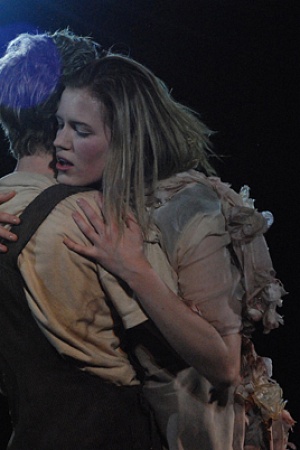The Caucasian Chalk Circle ★★★1/2 (Black Swan)
As the director of The Caucasian Chalk Circle, Dr. Wang Xiaoying states, this Black Swan/National Theatre of China production collaboration is 'an ancient Chinese story, written by a classic German playwright, performed by an Australian troupe', and is a 'collision and fusion of different cultures'. This cross-cultural engagement goes even further, extending to the musicians, designers, and production staff.
The attempt to create a theatrical blending of cultures is the most interesting and fascinating aspect of this collaboration between Australia and China. A great deal of money and effort has gone into this production; fourteen government agencies, sponsors, and philanthropic groups have supported it. As successful as this 'collision and fusion' appears to be on the diplomatic or business stage, its success on the performance stage was less clear.
Continue reading for only $10 per month. Subscribe and gain full access to Australian Book Review. Already a subscriber? Sign in. If you need assistance, feel free to contact us.














Leave a comment
If you are an ABR subscriber, you will need to sign in to post a comment.
If you have forgotten your sign in details, or if you receive an error message when trying to submit your comment, please email your comment (and the name of the article to which it relates) to ABR Comments. We will review your comment and, subject to approval, we will post it under your name.
Please note that all comments must be approved by ABR and comply with our Terms & Conditions.